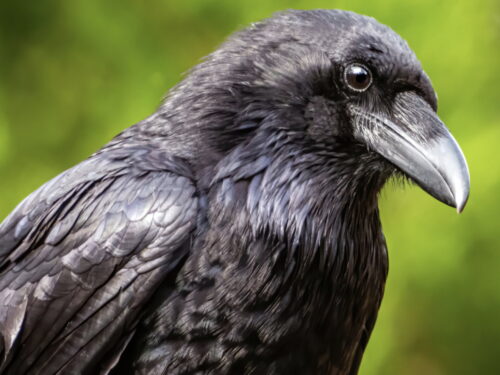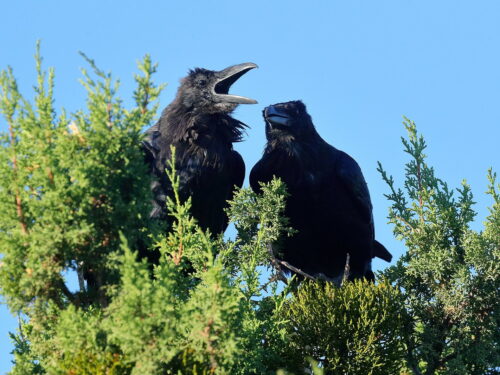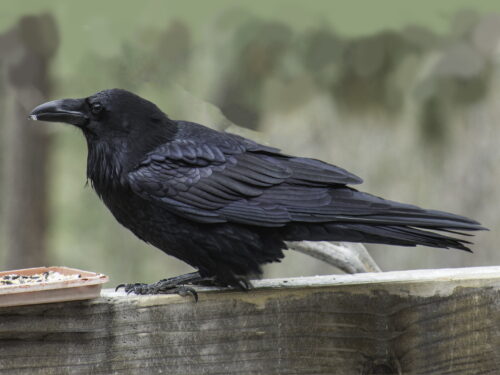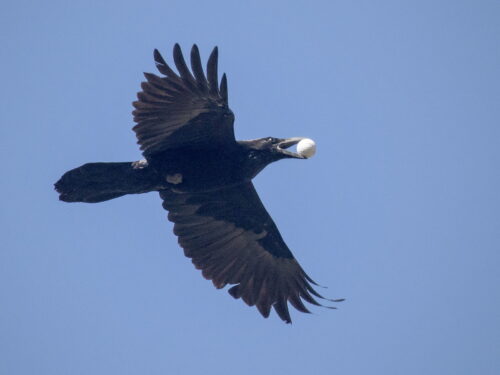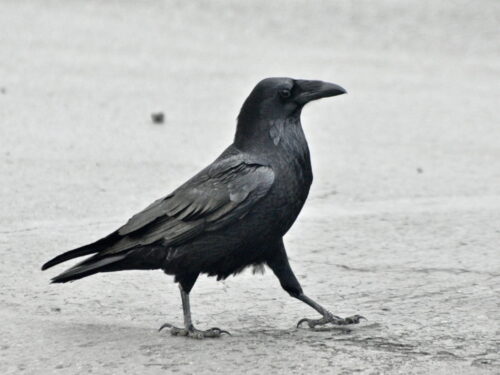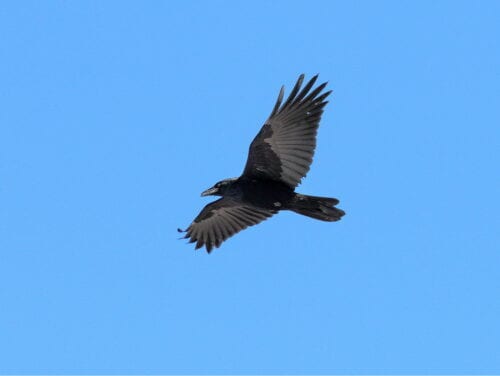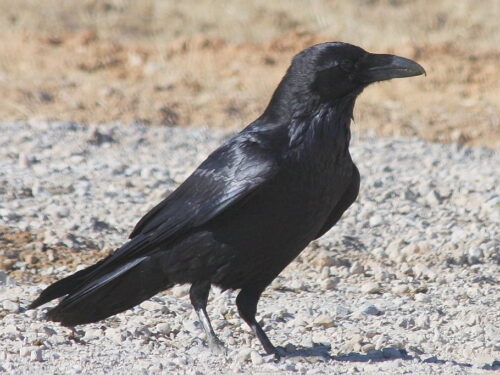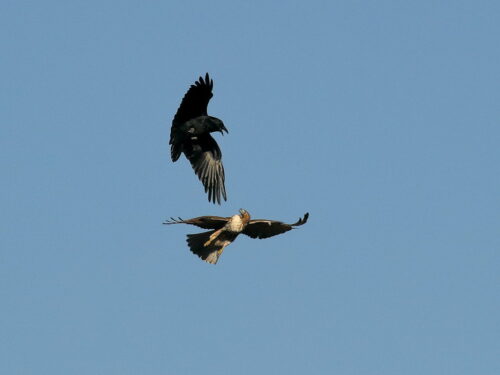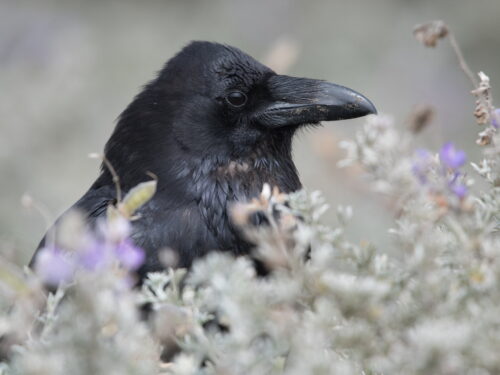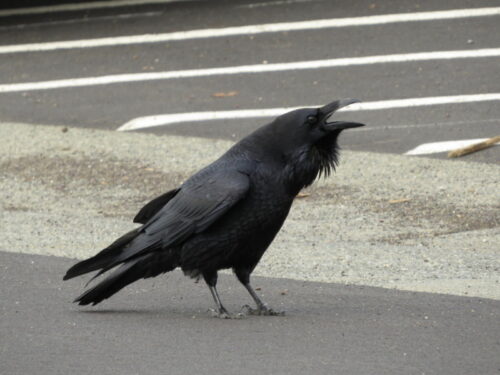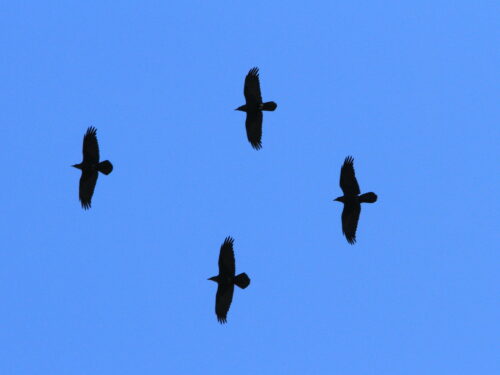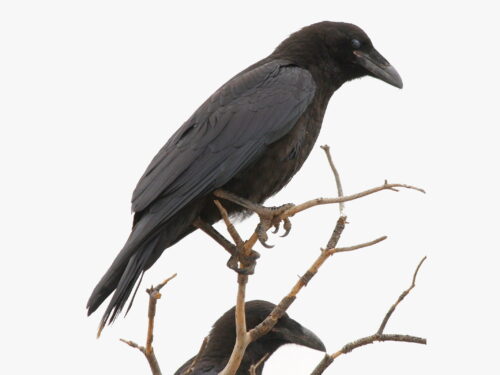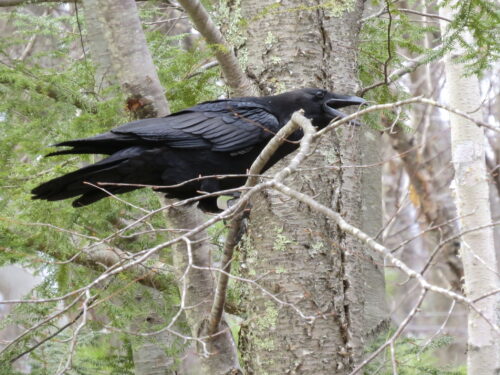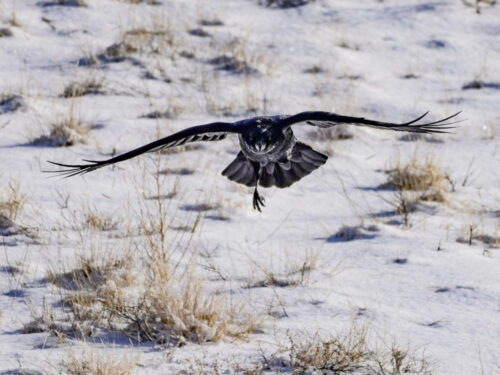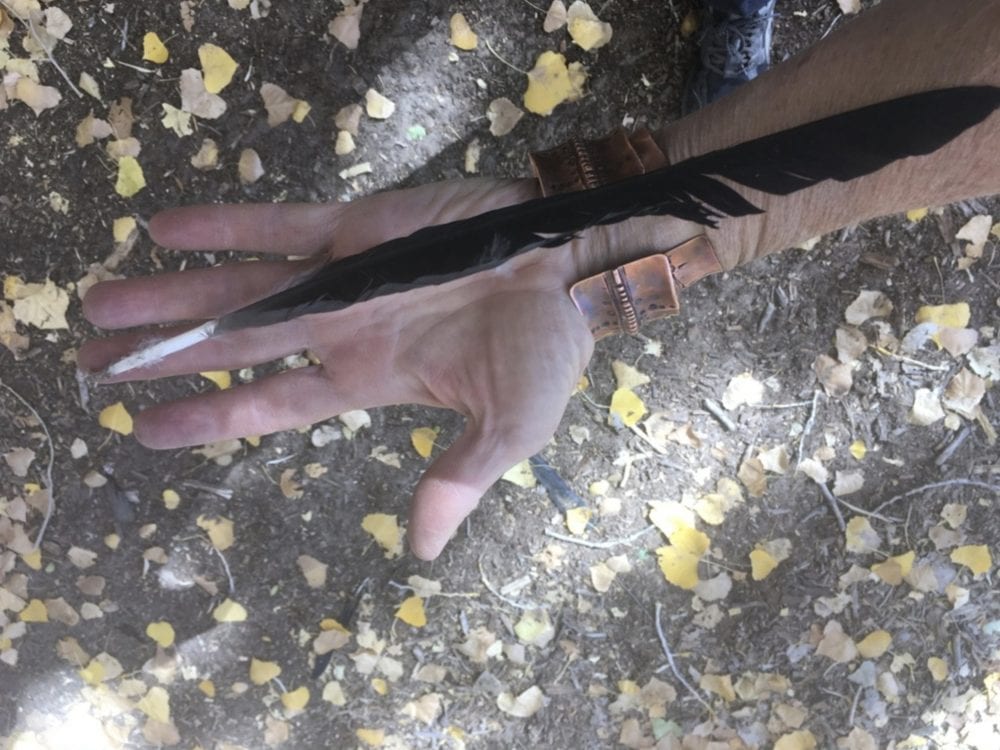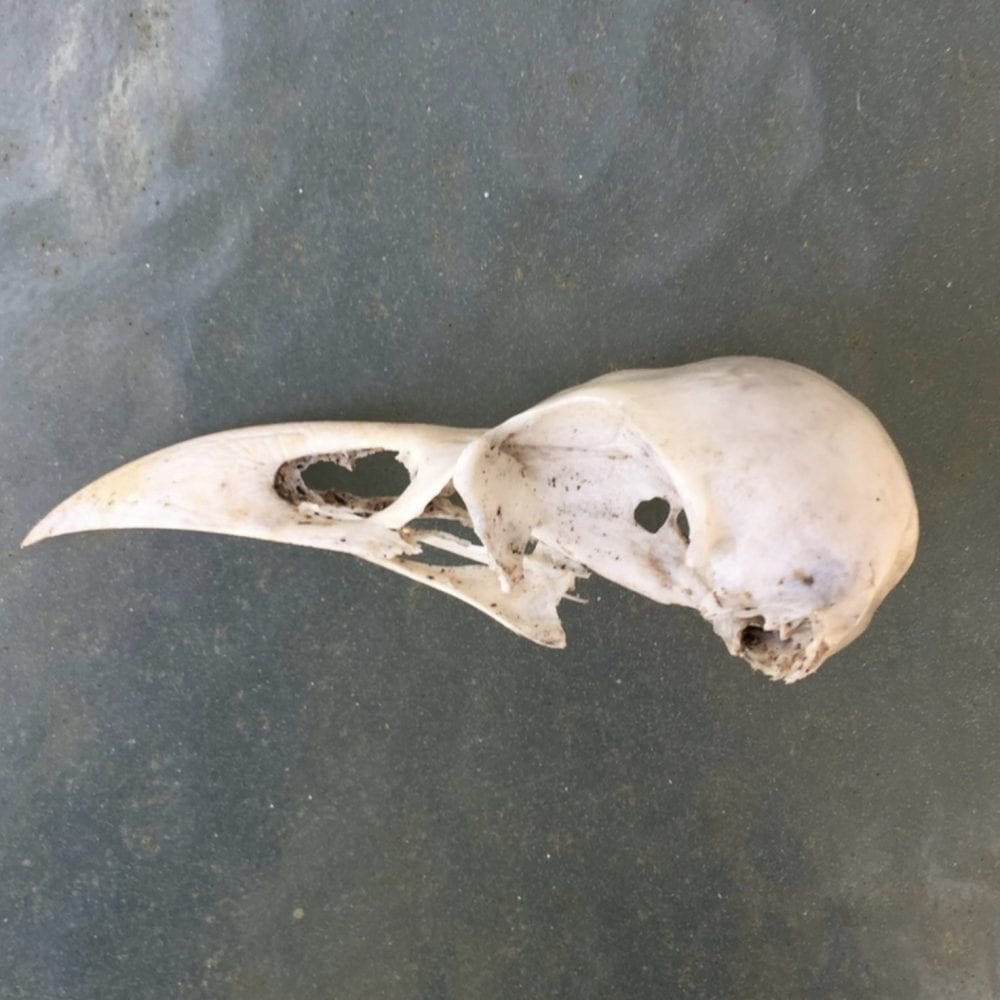Common Raven
Scientific name: Corvas corax
Type: Bird
Family: Corvidae (Corvids)
Size: 22 to 27 inches long; 46 to 47-inch wingspan
Weight: 24 to 70 ounces
Life Span: 10 to 15 years
Physical Description
Common ravens are the largest of the group of birds known as passerines or perching birds. They are glossy black overall with a wedge-shaped tail and shaggy throat feathers known as “hackles”. In addition, they have long, pointed wings, a large chisel-like bill, and brown eyes.
Male and female common ravens look alike with the exception that the females may be smaller. Juveniles have dull brown breast and chest feathers.
Adults
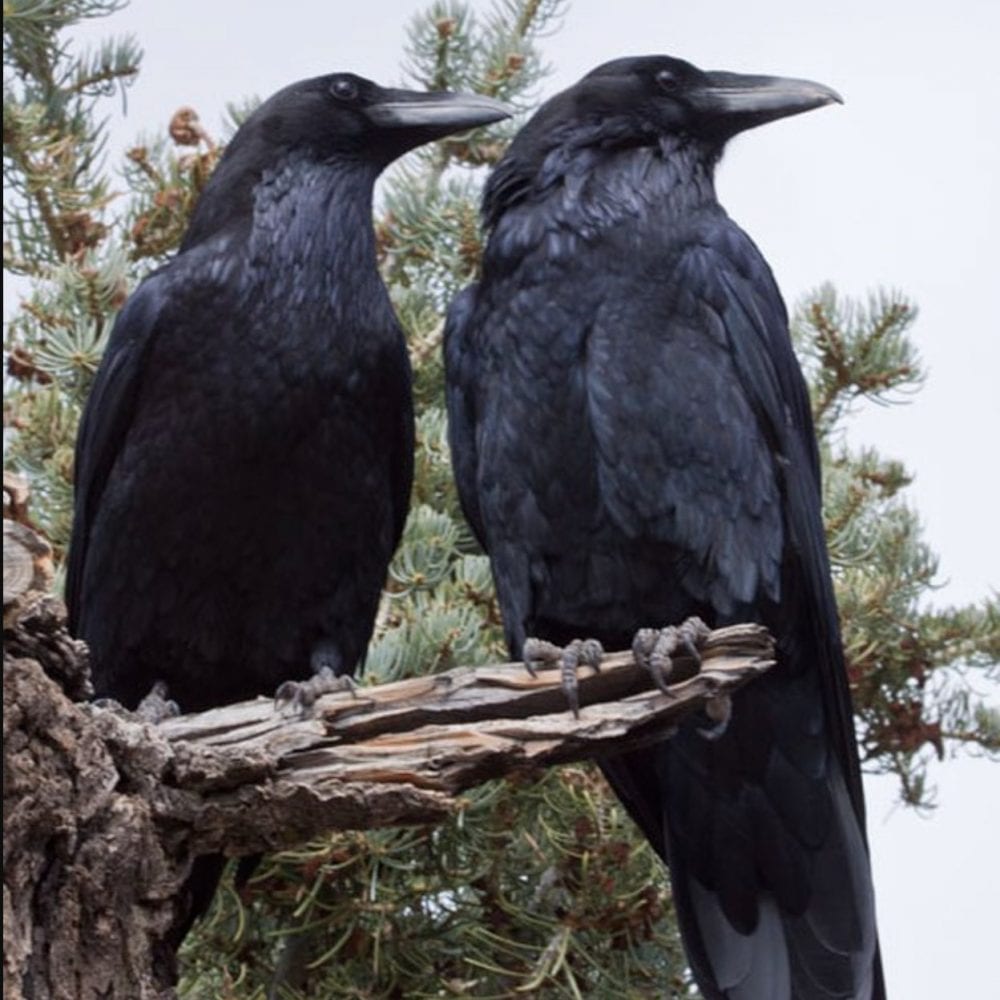
Juvenile
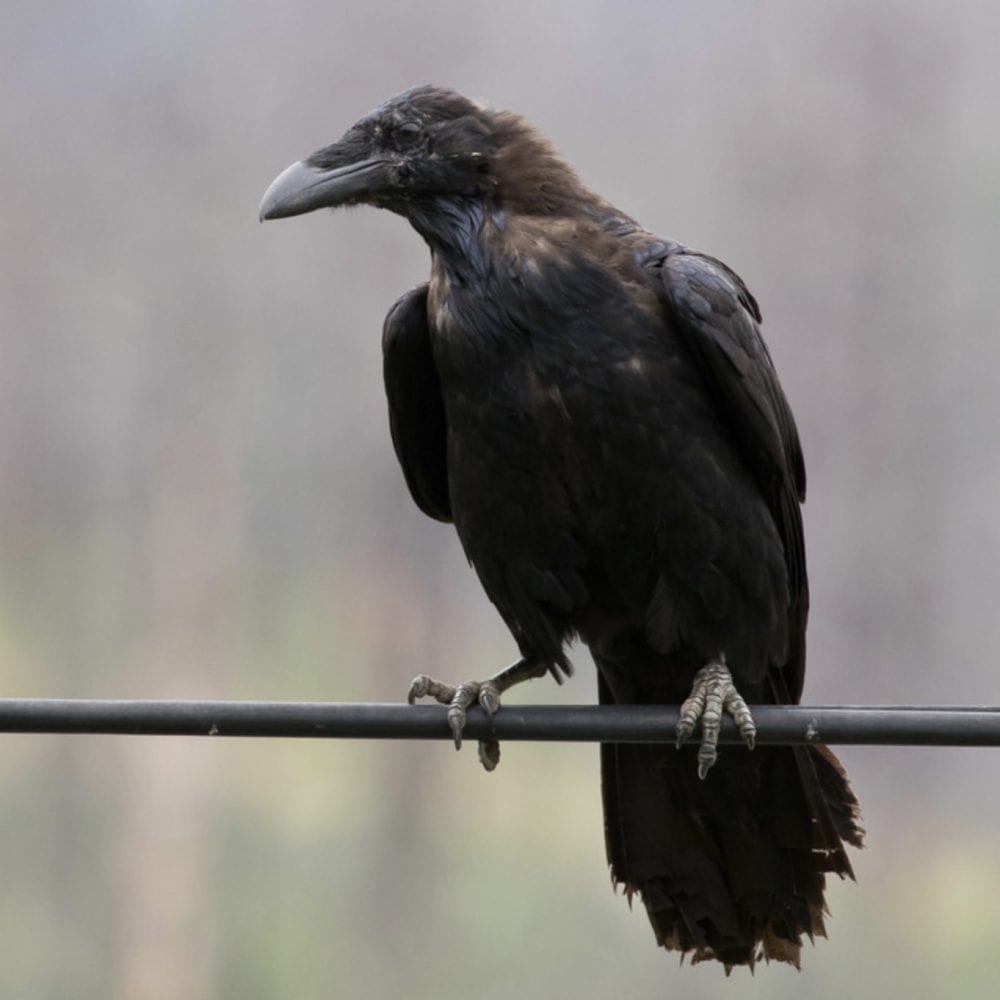
Range and Habitat
Common ravens are widespread throughout the world and do not migrate. They are found in northern Europe and central Asia as well as throughout North America and into Central America as far south as Nicaragua.
These birds are very adaptable and survive as permanent residents in a variety of surroundings from hot desert to high tundra. They prefer to live in open areas — rocky cliffs to mountain forests up to tree line as well as grasslands and scrublands. In some areas, they have become habituated to humans and can be found in urban settings.
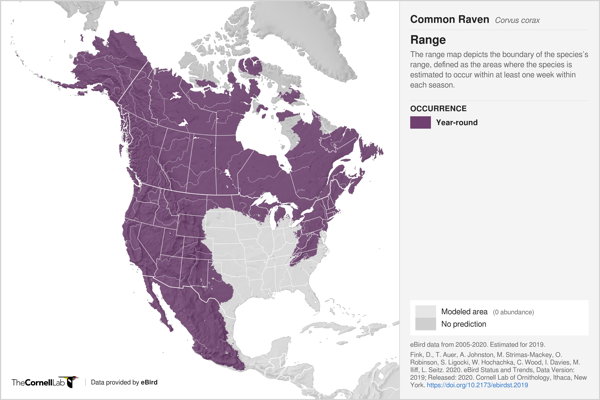
Diet
Common ravens are opportunistic feeders, meaning that their diet varies depend on the local habitat and available food sources. They eat a variety of insects, small mammals, lizards, frogs, eggs, young birds of other species, and even berries and grains. Essentially almost anything they can get hold of. In addition, they are scavengers feeding on carrion and garbage.
Behavior and Social Life
Common ravens are highly intelligent, bold, playful, and clever. They can reason cause and effect, solve puzzles, and use simple tools such as sticks to solve problems. For example, they will follow people and other birds to find new sources of food.
Although adult ravens mostly live alone or in male-female pairs, they will feed together in larger groups when food is plentiful. Young birds may stick together, even sleeping in a common roost. Mated pairs will establish a territory to keep other ravens out.
Common ravens are graceful and agile in flight, often performing acrobatics, playing with objects, and even sparring mid-air. They can produce a large number of sounds which are mostly used for communication, such as indicating when food is found. Their language abilities extend to learning to imitate the sound of other birds and mimicking human speech.
Preening
Calling
Life Cycle
Ravens are usually monogamous and sometimes mate for life. A mated pair will defend its territory throughout the year. During courtship, the male soars, swoops, and tumbles in mid-air. This can occur as early in the year as January.
Both sexes help build the nest which may be on the same site as the previous year with new material added. The nest site is usually on a ledge or high in a tree. The nest itself is made of large sticks and twigs lined with grass, bark, moss, and hair.
The female lays 4 to 6 greenish eggs with olive or brown blotches. The incubation period is about 3 weeks long during which the male feeds the female. Both parents feed the nestlings. The young will leave the nest at about 5 to 6 weeks of age. They may leave the area or stay with their parents for some time. Young ravens do not reach sexual maturity until they are about 3 years old.
Track
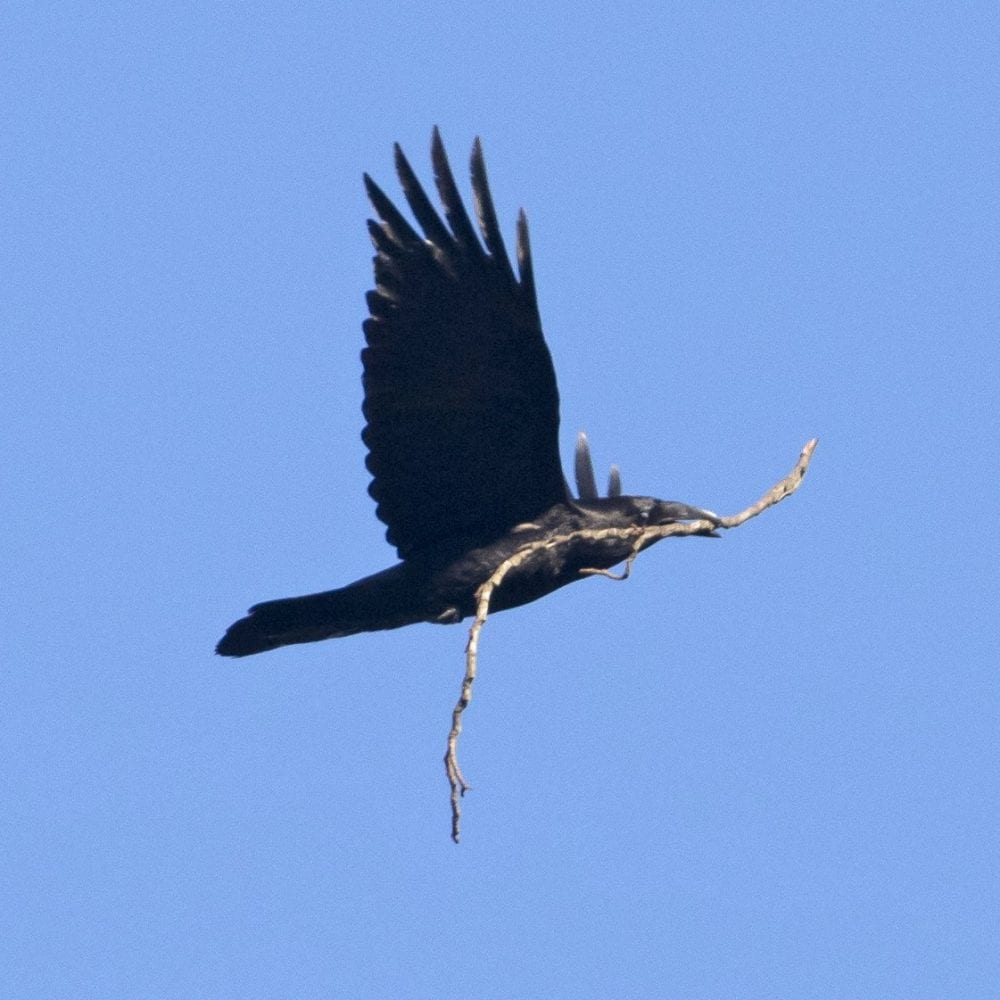
Macaulay Library ML314240611
Wing Print

Feather

Skull
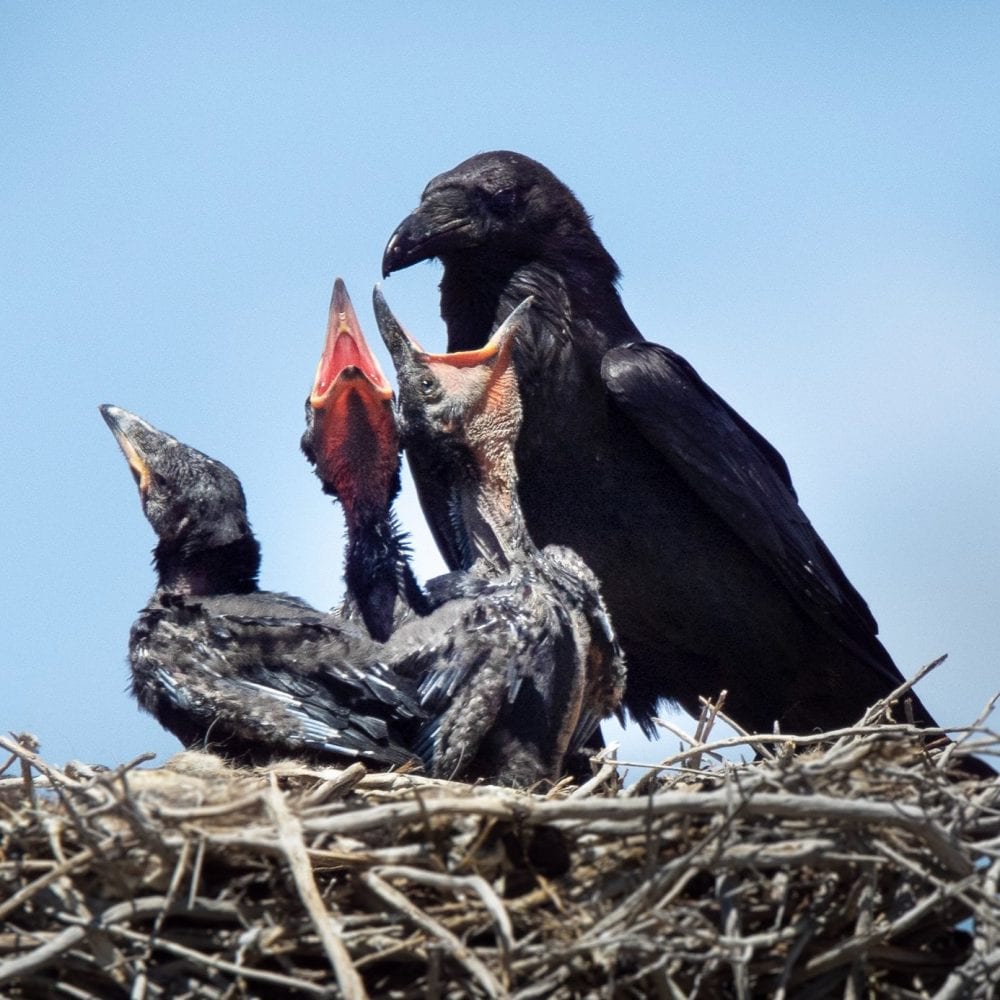
Macaulay Library ML241494701
Ecological Role
The common raven plays an important role as predator of many types of insects and rodents. In addition, they help foster the nutrient cycle by consuming carrion. While adults are not preyed upon by other animals, coyotes and several types of large birds like hawks, eagles, and owls will attack nests for fledglings.
Interactions With Humans
In many areas the common raven is considered to be a nuisance for eating crops. In addition, they have been observed killing young livestock such as lambs. In contrast, they benefit man by consuming dead animals that may harbor disease.
Crows feature prominently in the cultures of many Native American tribes as the creator of light and a trickster.
Interesting Facts
- Common ravens have one of the largest brains for any bird.
- Ravens often work in pairs to find food.
- They can use their beaks to open objects.
- Common ravens will hide their food to be eaten later; sometimes they will switch the hiding place if another raven is watching.
- Ravens are acrobats in the sky, surfing updrafts, flying upside down and even turning somersaults
- Young ravens will play a game of catch with sticks while in flight.
- Common ravens are capable of flying upside-down for as much as a half of a mile.
- Young ravens live in groups; adult birds live with their mates.
- Ravens can recognize and remember human faces.
- A group of ravens is called a “bazaar”, “constable”, or “rant”.
- The species name of “corax” comes from the Greek word meaning “croaker”.
- A raven will crush its food with its bill in order to taste it before actually eating it.
- Ravens are often associated with death and bad news.

